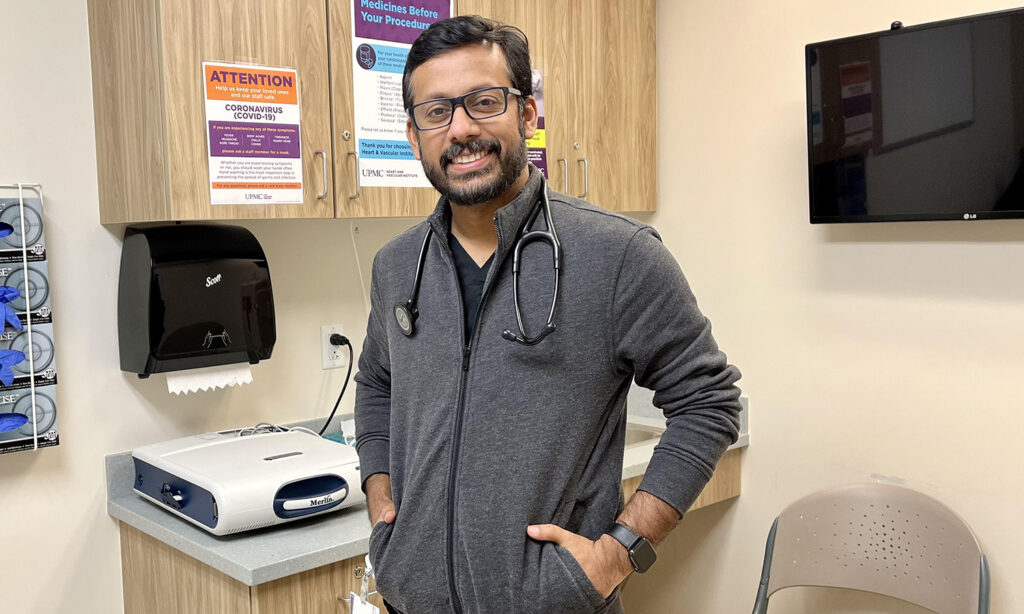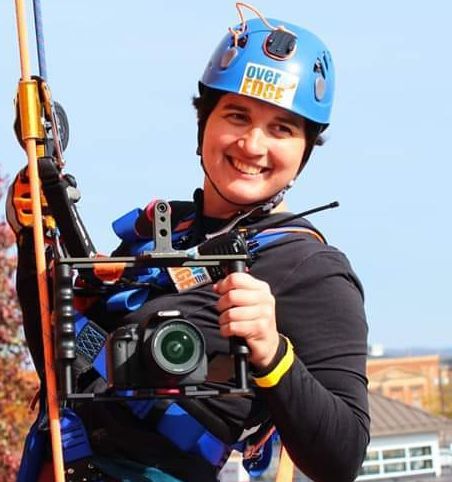
It was a rare day off for Dr. Kashif Chaudhry as he boarded a plane bound for Phoenix, Arizona. Also boarding the flight was 28-year-old Brittany Mateiro and six of her girlfriends headed to a bachelorette party.
Chaurdhry, a UPMC doctor in Williamsport, was accompanied by his wife Dr. Naila Shereen, and another companion Dr. Charles Koo. Chaudhry and Koo are electrophysiologists (heart rhythm specialists) on their way to a cardiology conference.
Soon after takeoff Mateiro told her friend, who sat next to her, that she would be taking a nap and she soon fell asleep.
Two hours into the flight, Chaudhry heard a loud scream from the back of the plane. It was Materio’s friend who glanced over and noticed her body was shaking. She pulled Materio’s mask down and realized she was having a seizure.
A flight attendant announced there was a medical emergency and asked for a doctor.
Chaudhry and his fellow doctors sprang into action and ran to the back of the plane to find the young woman slumped over in her seat.
“She was completely unresponsive,” Chaudhry said.
Thinking she may have fainted, Chaudry took a moment to check her pulse. He found nothing. To make certain and compensate for the vibrations of the plane he checked for a pulse in a second location, waiting 10 seconds. Still nothing.
“I told the flight attendants to help me unbuckle her and lay her on the aisle,” Chaudry said. “I had the good fortune of having two other physicians who were experienced in running codes with me. I assumed the role of team leader and started administering CPR.”
Staying calm through panic
The atmosphere on the plane was frantic. Other passengers and the young woman’s friends looked on in disbelief.
“There was palpable panic on the plane,” Chaudhry said. “I tried my best to calm everyone down. I am so fortunate we had two other doctors on the plane who were calm.”
Chaudhry was the first to begin administering CPR. A line of volunteers was formed to take over after he completed the first two-minute stretch.
A laboring 90 seconds went by as the tension in the plane built. Chaudhry said in these moments the rest of the plane and passengers faded away, he was solely focused on pushing the blood through Mateiro’s body, keeping her brain supplied with oxygen and preventing her organs from shutting down.
Chaudhry was just about to allow the next person to begin CPR when Mateiro’s body began to move. He immediately checked again for a pulse.
“I yelled out, “She has a pulse,” Chaudhry said. A sigh of relief rolled over the passengers in the plane. “There is life here.”
He estimated that Mateiro had been without a pulse for at least one minute. Two minutes or more could have caused brain damage and organ failure.
Detoured to Oklahoma
Chaudhry, his wife and their fellow doctor, sat with Mateiro in the aisle of the plane until she was oriented enough to sit up. Soon they moved her back to her seat.
The plane was detoured to Oklahoma where an ambulance was waiting to take Mateiro to the hospital.
After falling asleep, Mateiro said she doesn’t remember much until she woke up in the ambulance on the way to the hospital.
A single memory of briefly opening her eyes to see Chaudhry’s wife holding her hand was all she could recall from the near-death ordeal.
She is now back home in New Jersey, recovering well, but still uncertain what caused her medical emergency.
“I never thought in a million years this would happen to me,” she said. A self-described average 28-year-old, Mateiro lives an active lifestyle and eats healthy so the sudden health scare is nerve-racking, she said.
“This is serious, something could be wrong with me. It’s not normal that that happens,” she said. “There is nothing I can do except be as healthy as I can be right now.”
For Chaudhry it was a surreal experience. He has years of experience dealing with coding victims in the hospital, but he never expected to deal with it outside the hospital walls.
The importance of CPR
But Chaudhry is quick to point out that it doesn’t take a cardiac specialist, or any doctor, to administer CPR and potentially save someone’s life.
“Anyone who knew CPR in this situation could have done the same thing,” Chaudry said.
In the United States, 360,000 people suffer from cardiac arrest outside of the hospital. Between 70% and 90% die before making it to the hospital, Chaudhry said.
Less than 50% of CPR efforts are started by bystanders, he said. “That is a statistic we need to change.”
Only one in five people in the country are trained in CPR, according to Chaudhry.
“We should all consider it our responsibility,” he said, adding that a 30-minute class is all it takes to learn how to administer CPR properly.
Mateiro and her girlfriends gathered together a few days after the incident and decided to take a CPR class together this summer.
“I think I didn’t realize the importance of it until I was in my situation,” she said. “You can save someone’s life, and someone saved my life so I’m definitely getting the word out there for people to learn CPR.”
The good out there
The kindness of strangers has made a lasting impression on Mateiro. Not only has she kept in touch with Chaudhry about how she is feeling, but she is now a patient of Dr. Koo, whose clinic is near where she lives in New Jersey, as he helps her determine the reason for her health scare.
“Sometimes I feel in this crazy world no one sees the good anymore, but it’s out there,” she said.





It may be reassuring to travelers to know that Flight Attendants are CPR certified. Also, all commercial aircraft today have defibrillators on board as well as a host of medical supplies/medications/oxygen bottles. They are trained to make an announcement requesting assistance from medical professionals. If none are aboard, the crew can sustain CPR/other care until the plane’s on the ground and hospital EMT’s can then take over.